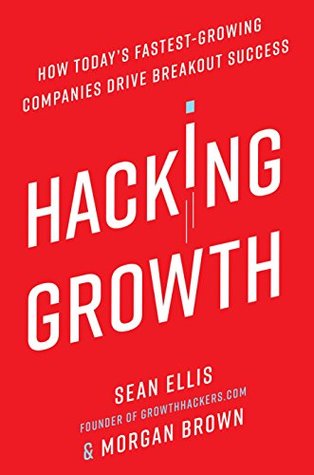More on this book
Community
Kindle Notes & Highlights
be a remarkably reliable means of measuring whether customers love a product or not.
How disappointed would you be if this product no longer existed tomorrow? a) Very disappointed b) Somewhat disappointed c) Not disappointed (it really isn’t that useful)
The companies that grow the fastest are the ones that learn the fastest. The more experiments you run, the more you learn. It’s really that simple.
Each bit of learning acquired leads to better performance and better ideas to test, which leads to more wins,
Many of the leading growth teams regularly run 20 to 30 experiments a week, and some run many more. Early stage start-ups might be able to launch only one or two tests per week and then steadily build up to a higher volume, while later stage start-ups and large, established firms might well be able to start out with a much higher number.
THE GROWTH HACKING CYCLE Recall that the stages of the process are: data analysis and insight gathering, idea generation, experiment prioritization, running the experiments, and then returning to the analyze step to review results and decide next steps, in a continuous loop.
each turn through this cycle should be completed on a consistent interval, preferably in one or two weeks
The cycle is managed by a one-hour weekly growth team meeting to review results and agree on the next week’s ...
This highlight has been truncated due to consecutive passage length restrictions.
The growth lead should then ask the data analyst to share the results of the initial analysis done, and the growth lead should present the key growth levers, the North Star metric, and the area of focus or objectives for the team.
The team should then set the goal for the volume and tempo of experiments to launch each week; i.e., how many tests they think they can reasonably manage to design and implement.
the team will need to uncover what the aha moment is for people who are using the app,
and what it is about them and their usage that differs from those who don’t.
NUMBER OF INSTALLS × NUMBER OF MONTHLY ACTIVE USERS × NUMBER OF PURCHASERS × AVERAGE ORDER SIZE × REPEAT PURCHASE RATE = AMOUNT OF GROWTH
They determine that their North Star should be monthly revenue per shopper.
to build a large base of highly active shoppers who make substantial purchases on a regular basis.
With the aha moment in hand, the data tracking in place, the core metrics identified, and the team assembled, it’s time to kick off the high-tempo growth hacking process.


